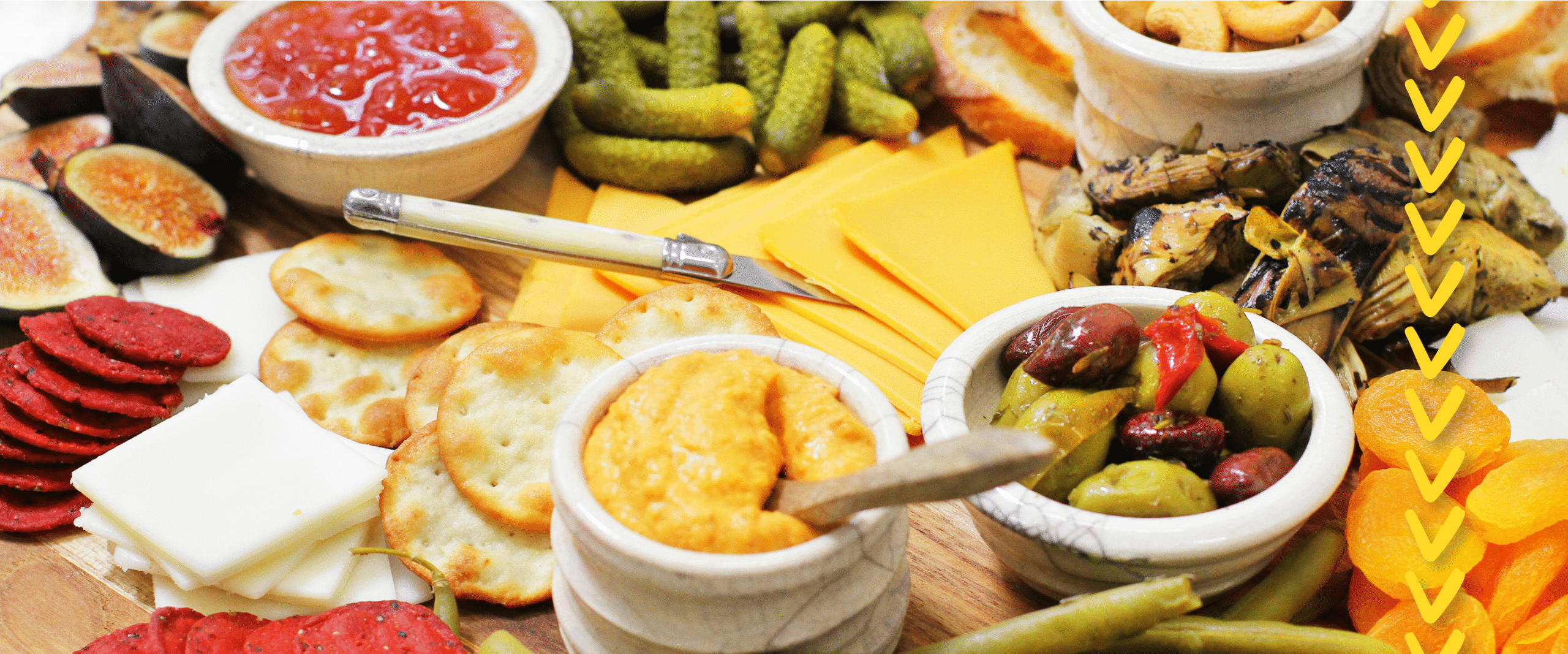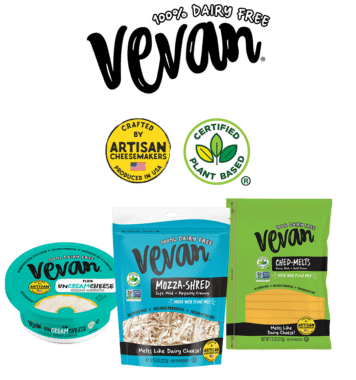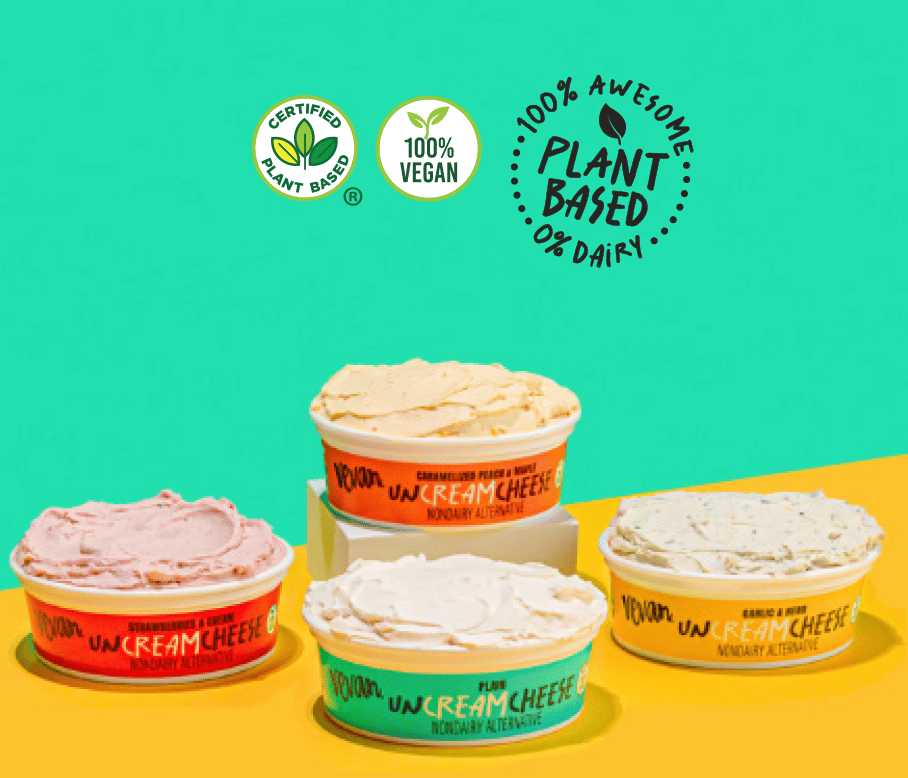A cheesy vegan charcuterie board is a fun way to share your favorite plant-based foods with friends. If you’re stumped on how to make a charcuterie board, let alone how to make a vegan charcuterie board, don’t worry – Vevan has you covered! Get ready to impress with this simple, step-by-step guide (inspired by our recipe) to building a vegan charcuterie board that looks – and tastes – absolutely amazing! Plus, learn the origins and other pro-tips for this versatile crowd-pleaser.
What is a Charcuterie Board?
If you like understanding the origins of your food, know that the word charcuterie is French, taking the words “chair” meaning flesh and “cuite” meaning cooked – i.e. charcuterie = cooked meats. Historically speaking, in the 1400s, the French would preserve leftover ends of meat by adding salt, herbs and spices to create flavorful, cured meats rather than waste them.
Since that time, charcuterie has become a popular appetizer, added to boards with breads, spreads, and our personal favorite – cheese!
What to Put on a Vegan Charcuterie Board
The main difference between a traditional charcuterie board and a vegan charcuterie board is probably obvious – the cheese and the meat. So, how do you make your charcuterie board vegan? Time to get Vevafied!
Following our Vegan Charcuterie Board recipe, we suggest our 100% awesome, 0% dairy-free Vevan Melts in these three insanely delicious, outrageously awesome flavors: Ched, Mozza and P’Jack. To make things more visually interesting, try cutting in different shapes like squares, triangles or whatever cookie cutter shapes you may have on hand, like hearts in this special Valentine’s Vegan Charcuterie Board.
If you’re a flexitarian or perhaps exploring dairy-free or reduced dairy eating, consider adding your favorite meats like pepperoni, prosciutto, salami and soppressata. Sticking with a fully vegan charcuterie board? We recommend plant-based versions of these meats and adding something hearty like our Mozza, Onion & Raspberry Cheeseball.
Beyond that, most charcuterie boards contain an array of crackers, breads, fruits, veggies and accoutrements like our UnCreamCheese to complement your cheese and meat selections.
How to Arrange a Charcuterie Board
A well-plated charcuterie board can serve as a centerpiece, drawing people together at gatherings. How do you get that Insta-worthy look? Follow this step-by-step guide for building a beautiful (and delicious!) vegan charcuterie board:
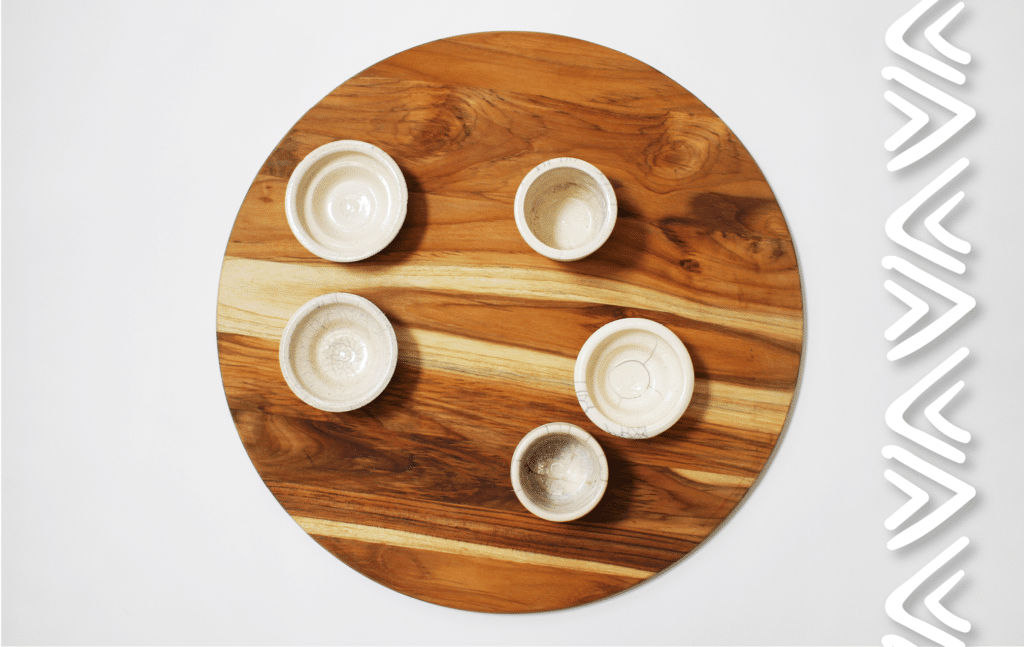
Step 1: Start with a flat platter. We like the visual interest of the wood grains in the round board used in our photos, but you can go with whatever shape and style suits you best.
Step 2: Next, position some small containers to hold dips, sauces and other small items that you want to keep separate from other foods. Think prepared jams, fruit spreads, chutney, hummus and tapenade. These basic white ramekins are an attractive contrast to all the colorful foods we’ll be adding.
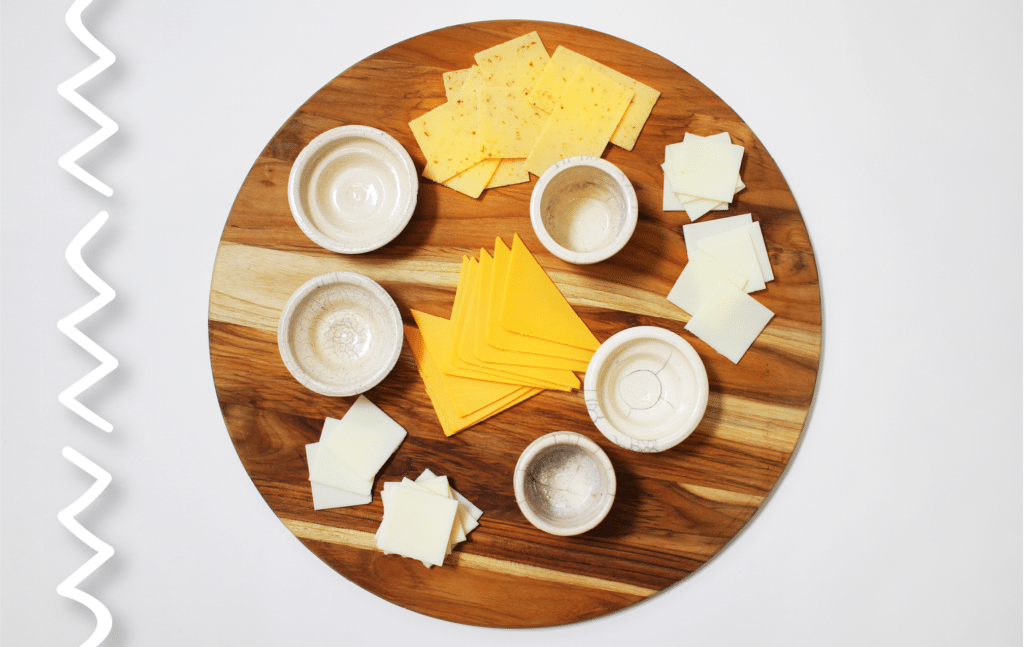
Step 3: Add your main ingredient – in this case dairy-free Vevan cheese, and lots of it! We used Vevan Melts in Ched, Mozza and P’Jack. Whatever you choose, offer a selection of flavors (and for the sake of good looks, be sure to choose a mix of colors, too). Cut a variety of slices, wedges and cubes for more visual appeal.
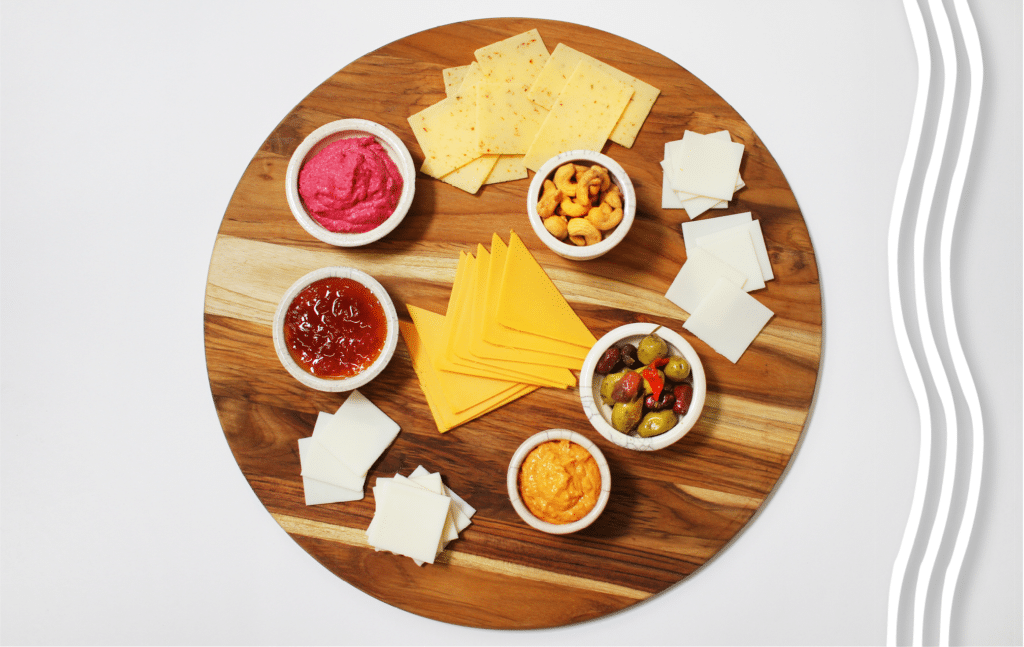
Step 4: Fill your ramekins or containers so you can easily wipe up any spills before the other ingredients are added.
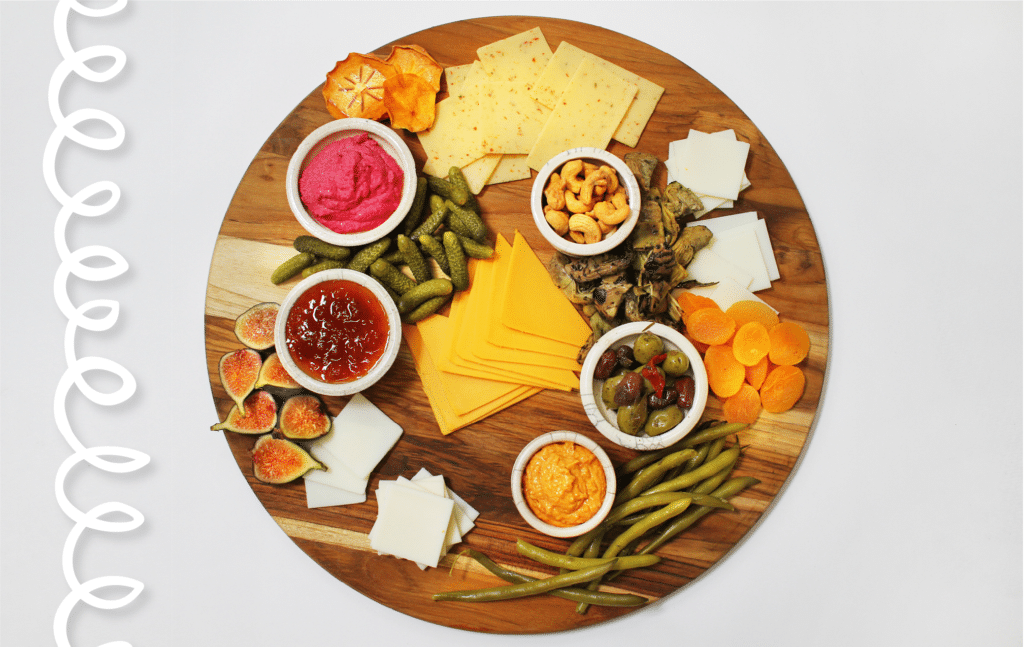
Step 5: Begin filling in with dry ingredients like fresh veggies (carrots, celery, cucumber, bell peppers, cherry tomatoes, sugar snap peas, cauliflower, broccoli) and dried fruit (apricots, figs, cherries, persimmons, dates).
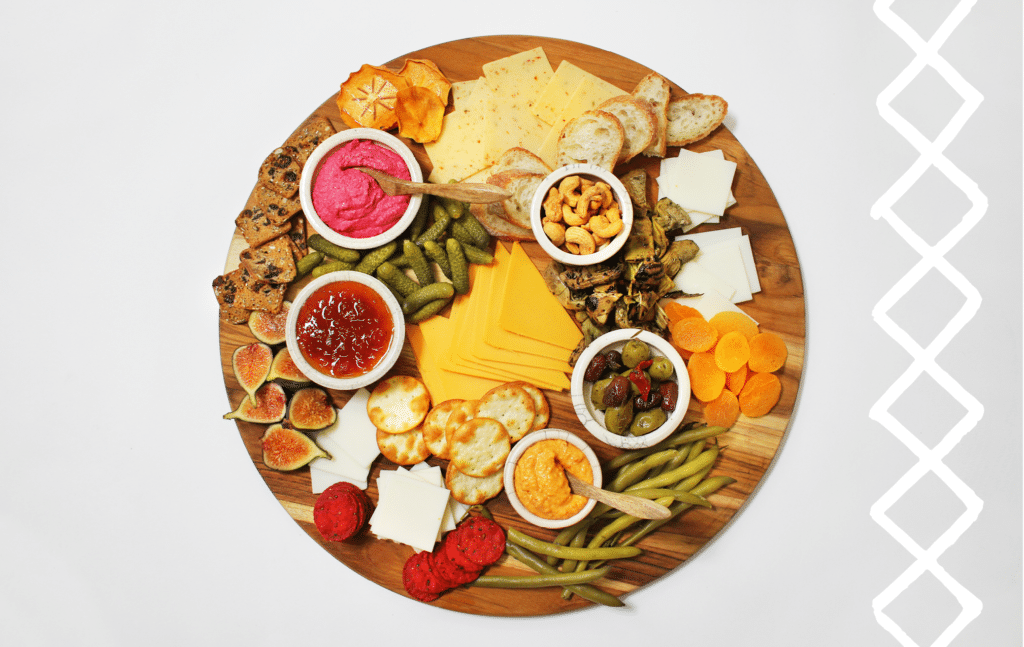
Step 6: Add vegan meats (or traditional charcuterie meats) , if you like, along with your favorite relish, such as olives, pickles, artichoke hearts, pickled veggies, and pepperoncini peppers.
Step 7: Offer a selection of breads in different sizes, flavors, and textures. We used thinly sliced baguettes and crackers. Breadsticks and cubes of breads like sourdough or pumpernickel are also good choices.
Step 8: Finish with garnish. An assortment of fresh fruit like grapes, blueberries, raspberries, figs, sliced oranges, apples, strawberries, and blackberries works well. (Tip: After washing the fruit, be sure to pat dry thoroughly so colors don’t bleed or get other ingredients soggy.) You can also add sprigs of herbs like dill or parsley for a pretty final touch.
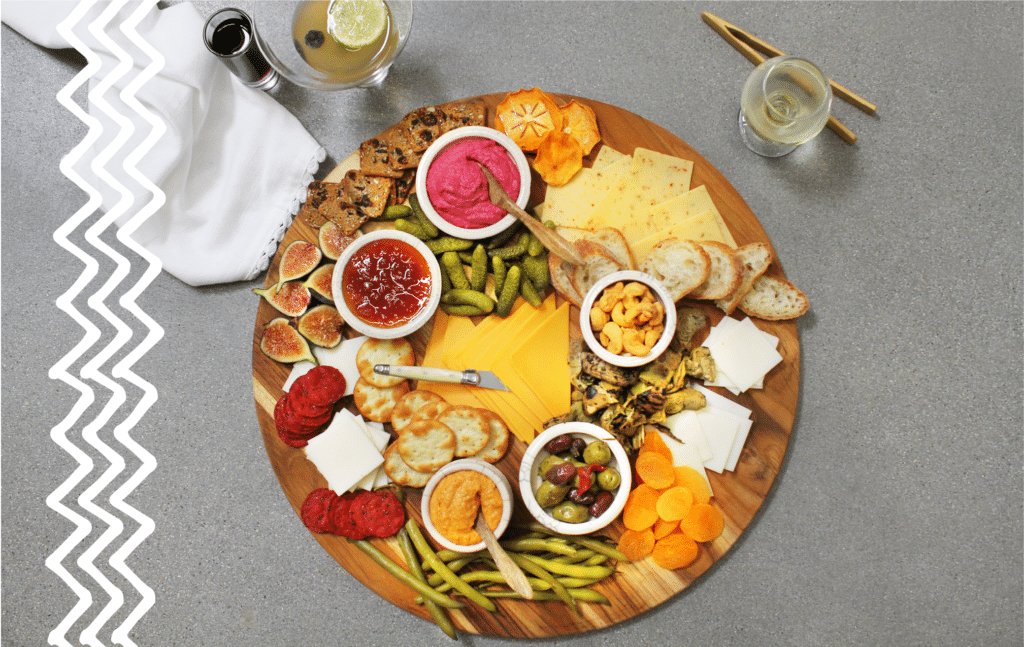
Are Charcuterie Boards Healthy?
A good rule of thumb for eating is “everything in moderation,” and the same goes for a vegan charcuterie board. Vevan cheeses use the highest quality, least processed ingredients and are certified plant-based, dairy-free, non-GMO, preservative-free, allergy-free, gluten-free, and soy-free. Plus, we include probiotics in our cheesemaking process, helping to promote a healthy gut bacteria balance and support immune function! However, cured meats, whether vegan or not, often contain high amounts of sodium.
Keep yourself in check by filling your plate with equal ratios of fruits and vegetables to meats and cheeses, as well as enjoying breads and spreads in small servings. If treating your charcuterie board as an appetizer, be sure to also save room for the main course!
How to Eat a Charcuterie Board
Remember, there really are no rules when it comes to creating the perfect vegan charcuterie board. It’s a delightful excuse to try something new, along with a mix of the flavors you like best. Just be sure to include some pops of color so it’s visually appealing, too.
Go for your favorites, and don’t forget to pair with your choice of beverages and tunes to create the perfect party atmosphere, even if you happen to be a party of one. (Pro tip: vegan charcuterie boards are not just for parties! Make one for lunch or dinner to make your cheese-lovin’ dreams come true.) If you’re feeding a crowd, consider offering up toothpicks for selecting and serving those tasty board selections.
Followed our board-building guide? Show us your vegan charcuterie boards on Instagram and be sure to tag us @vevan.foods.

